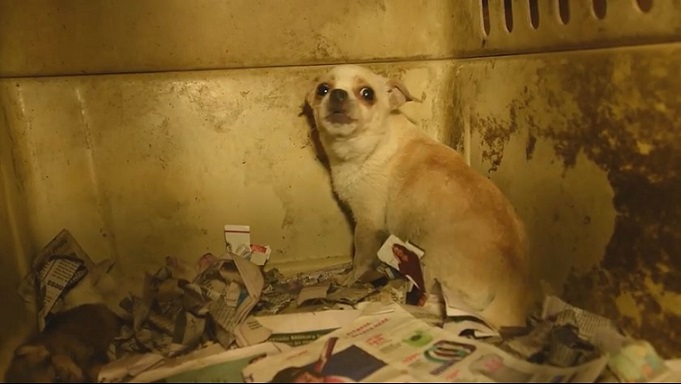Puppy Mills a Continuing Atrocity in Georgia
Puppy and animal mills keep pets in inexcusable conditions. Including the puppy above, hundreds of captive animals were rescued on April 18th 2017 in Habersham county; however, thousands more will not be so lucky.
October 19, 2017
Puppy mills in Georgia originated roughly during the post-World War II era and are still in extensive existence today. They are horrible places in which dogs are extensively bred to maximize profits of breeders, and despite the numerous attempts by humane societies and charities to shut down such facilities, there is still a substantial problem in both Georgia and across the United States.
Specifically, in Georgia, hundreds of mills have been discovered since the infamous popularity of mills in the 1940’s. However, not only puppies are found and abused in mills, but other animals such as bunnies, cats, and horses are also hoarded and neglected. For example, in April 2017, more than 350 animals were discovered and saved from a Habersham county mill. The animals rescued were not limited to only dogs, but there were also cats, donkeys, chickens, ducks, pigs, bunnies, doves, a horse and an alpaca. All animals which were living in horrendous, harsh, and inhuman conditions and being sold to the highest bidder.
In mills, animals are continuously bred in order to maximize the profit of selling the newborns. Since most dog and animal consumers seek to adopt puppies and kittens, female animals are bred non-stop. These mills are usually overcrowded and highly unsanitary with little care for the animals that live there. Animals are immensely underfed, severely dehydrated, limited in social interaction and deprived of necessary veterinary care. Mills exist in order for excessive breeders and mill owners to make the most profit of the general public’s love for puppies.
The creation of puppy mills was a result of farmers in the United States searching for a new and alternative crop to produce for the public. But farmers noticed a growing increase in the want for puppies and took advantage of the presented opportunity, resulting in the creation of commercial puppy businesses. Soon retail stores began selling puppies until the first pet stores were commercialized. However, before being taken to stores to be sold, newborn and growing puppies were kept in chicken coops and rabbit cages. Other than living in harsh conditions, the dogs and puppies were deprived of necessities such as adequate food, water and vaccinations. Such conditions worsened as the years went on.
While puppy mills in Georgia are becoming less common, they are still existent. More than seventy-six percent of the animals that are connected with breeding mills are affected either medically, socially, and/or physically as a result of abuse and neglect. However, to end the cycle of neglect for animals local ASPCA (American Society for the Prevention of Cruelty to Animals) officials advise that in order to put an end to puppy mills to follow a certain procedure. They advise adopting pets at humane societies or pet shelters, not large retail stores whom most likely receive their puppies from mills. They also advise that if any suspicious hoarding activity of pet food or water should be reported to local authorities immediately. With the help of the community, the ASPCA, along with several other organizations, hope to end puppy mills in Georgia.




